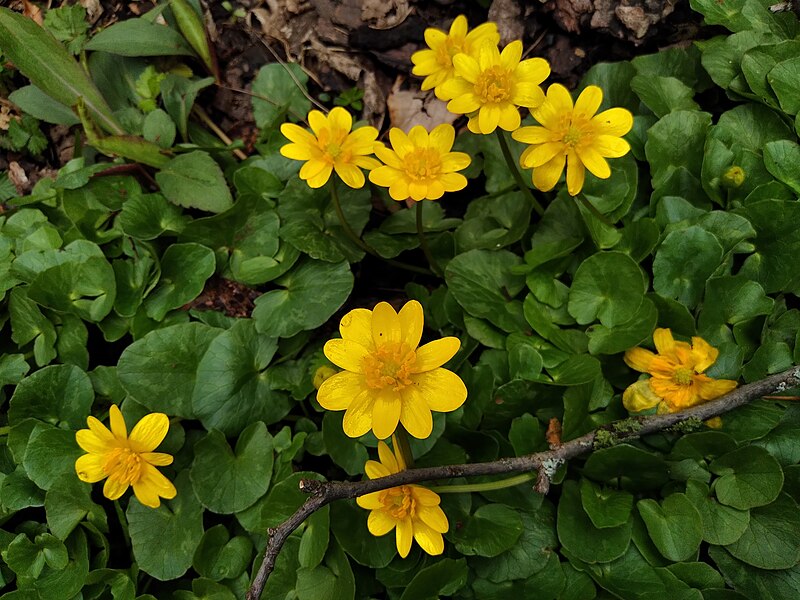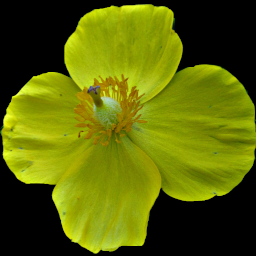
Formerly known as Ranunculus ficaria, Lesser Celandine is a European import that is rapidly colonizing our stream valleys. Only seven years ago we wrote that it was “not very common around here except in a few stream valleys,” but since then it has popped up a number of other places where it was previously unknown. These particular flowers were blooming in Bird Park, Mount Lebanon, where the plant was not to be found in 2015, but has since established some sizeable clumps and is rapidly becoming a notable feature of the early-spring flora.

Gray describes the genus and the species:
RANÚNCULUS [Tourn.] L. CROWFOOT. BUTTERCUP. Annuals or perennials; stem-leaves alternate. Flowers solitary or somewhat corymbed, yellow, rarely white. (Sepals and petals rarely only 3, the latter often more than 5. Stamens occasionally few.) — (A Latin name for a little frog; applied by Pliny to these plants, the aquatic species growing where frogs abound.)
§ 1. FICÀRIA Boiss. Roots tuberous-thickened; sepals 3; petals about 8, yellow, with a free scale over the honey gland.
R. ficària L. (LESSER CELANDINE.) Glabrous and somewhat succulent; leaves basal on long stoutish petioles, ovate, rounded, deeply cordate, subcrenate; flowers scapose, 2 cm. in diameter. (Ficaria Karst.) — Wet places, occasional; Mass. to D. C. Apr., May. (Introd. from Eurasia.)
